You can set up a much safer and controlled computing environment for your children, and in this guide, we'll show you the steps to complete this task on Windows 10.
On Windows 10, you can set up multiple accounts to share a laptop or desktop computer with other family members. If you have children, they can also have a personal space in a more controlled environment to ensure they have the safest experience possible while browsing the internet, using apps, and playing games.
It's all possible using the option to create a child account on Windows 10, which you can then manage in many ways through the "Family" settings in your Microsoft account. These tools allow you to review reports of your children's online activities or limit the time they spend with their or shared devices. You can also restrict age and screen time for apps and games to ensure they don't end up loading sites that are not suited for them.
In this Windows 10 guide, we will walk you through the steps to set up a child account and manage its parental control settings.
- How to create a child account on Windows 10
- How to manage a child account on Windows 10
- How to fix common child account problems on Windows 10
How to create a child account on Windows 10
To create and set up a child account on Windows 10, use these steps:
- Open Settings.
- Click on Accounts.
- Click on Family & other users.
-
Under the "Your family" section, click the Add a family member button.
Quick note: If the young person already has an account, you can enter it in the email field to continue with the setup.
-
Click the Create one for a child option.
-
Confirm the email address of the young person you want to add.
- Click the Next button.
- Create a new password for the child's account.
- Click the Next button.
-
Confirm the name of the person.
- Click the Next button.
-
Confirm the person's birthday.
- Click the Next button.
-
Confirm the newly created email account.
- Click the Next button.
- Confirm the password.
- Click the Sign in button.
-
Confirm the parent or guardian's consent.
- Click the Continue button.
-
Confirm your parent or guardian email account.
- Click the Next button.
-
Sign Microsoft's consent form by typing your name as shown in the form.
- Click the Yes, I agree button.
- (Optional) Clear the My child can sign in to non-Microsoft apps option.
-
Click the Continue button.
- (Optional) Confirm the age limit for apps and games.
- Turn on the Activity reporting toggle switch.
-
Turn on the Web and search filters toggle switch.
- Click the Sign out button.
Once you complete the steps, a standard account with limited access will be created for the child, and the new member will be able to sign in immediately.
Signing in the first time
To complete the setup of a child account, use these steps:
- Sign out of your account.
- Click the new account (it'll initially show as an email address).
- Click the Sign in option.
- Confirm the account password.
-
Click the Sign in button.
- Click the Next button.
-
Create a new PIN.
- Click the OK button.
-
Click the Only save files to this PC option. (Unless you want your kid's data to get backed up in OneDrive.)
-
Choose the privacy settings for the new Windows 10 account by turning on or off the toggle switch for each option.
- Click the Accept button.
After you complete the steps, the next time your kid signs in, the account will appear as the user's name, and they can sign in directly to the desktop.
How to manage a child account on Windows 10
Once the account has been set up, you can use the "Family" setting in your Microsoft account online to view activity reports and limit screen time for apps and games. You can enforce ratings for content, apps, and games and add money to allow the young person to make small purchases in the Microsoft Store.
To manage an account for a family member, use these steps:
- Open Settings.
- Click on Accounts.
- Click on Family & other people.
-
Under "Your family," click the Manage family settings online option.
Alternatively, you can sign into your Microsoft account in your web browser and open the Family tab.
While in the family dashboard, you can view activity reports and manage various aspects of the account, such as screen time for the entire device and apps and games, block inappropriate websites, and much more.
View recent activities
The activity reports allow you to view the user's recent web and searches, spendings, apps and games, Xbox online gaming, and screen time of a user.
To enable and view the family member recent activities, use these steps:
-
Under the kid's account, click the Overview option.
- Click on Overview from the left navigation pane.
-
Turn on the Activity reporting toggle switch at the bottom of the pane to start collecting activities from their Windows 10 devices (if applicable).
- (Optional) Turn on the Email weekly reports to me toggle switch to get a full report delivered to your email account.
-
Under the account's name, click the activity menu to select the day of activities you want to review the activities.
Once the option is enabled, you can see the websites they've been visiting, the apps and games they have been downloading and playing, and the time they've spent on their devices.
Limit screen time
The screen time limit is a feature that lets you specify how much time someone can spend on the computer and a during what periods of the day.
To limit the time a family member spends on the computer, use these steps:
- Under the kid's account, click the Overview option.
- Click on Screen time from the left navigation pane.
- Click the Devices tab.
-
Turn on the Use one schedule on all devices toggle switch.
Quick tip: It's also possible to enable screen time per device type (Windows 10 and Xbox devices).
- Click the day you want to customize the screen time of.
- (Optional) Use the drop-down menu and select the Every day option to set the same settings for all the days of the week.
- Use the available slider to specify the hours the family member can use the computer.
-
Use the schedule settings to specify during what time they can use screen time.
- (Optional) Click the Add a schedule option to specify a second time range to continue accessing the device.
- Click the Done button.
After you complete the steps, your children will only be able to use their devices during the time you specify.
Limit apps and games limits
The Family settings also include settings to enforce screen time limits for apps and games to promote a healthier and safer lifestyle for young members.
To add limits for app and game, use the steps:
- Under the kid's account, click the Overview option.
- Click on Screen time from the left navigation pane.
- Click the Apps and games tab.
-
Turn on the App and game limits toggle switch (if applicable).
- Select the app or game.
-
Click the Set a limit button.
Quick tip: You can also use the Block app button to restrict access to the application when the user is logged in.
-
Choose which days to set limits on the specific application. Options include:
- Every day
- Weekdays
- Weekends
- Use the available slider to specify the hours the family member can use the app.
-
Use the schedule settings to specify during what time they can use screen time.
- Click the Done button.
Once you complete the steps, the app will only be available during the specified hours. Outside the limits, the user won't be able to launch the application.
Apply content restrictions
The Content filters tab includes the settings to set an age limit to restrict inappropriate apps and games. Also, you can enable web filtering to block websites and search results that are known to be not suited for young people. In addition, you can restrict or specify the set of sites your child can access.
Set age restriction
To specify an age restriction, use these steps:
- Under the kid's account, click the Overview option.
- Click on Content filtering from the left navigation pane.
- Click the Apps and games tab.
-
Use the Apps and games rated up to age drop-down menu to specify the age restriction (for example, 18).
- (Optional) Under the "Blocked apps" section, click the Remove option to allow the app above their age rating.
If you want to block an app, you can do this from the "Apps and games limits" tab, selecting the app and clicking the Block app button.
If you want to allow the app, confirm "yes" when they try to launch the app and ask.
Set web filtering
To control which websites a family member can access, use these steps:
- Under the kid's account, click the Overview option.
- Click on Content filtering from the left navigation pane.
- Click the Web and search tab.
-
Under the "Filter settings" section, turn of the Filter inappropriate websites and searches toggle switch.
- (Optional) Turn on the Only use allowed websites toggle switch if you want to block every website except those you specify as allowed manually.
- Under the "Always allowed" section, specify the website you want to allow.
- Click the + button to add it to the list.
- Repeat step No. 8 to add more sites.
-
Under the "Blocked sites" section, specify the website you want to deny.
- Click the + button to add it to the list.
- Repeat step No. 11 to add more sites.
It's worth noting that if you want to use web filtering, inappropriate searches will be more effective using Microsoft Edge and Bing as the default search engine.
If you want to restrict your child from using another search engine, which may not have safe search enabled, it is a good idea to add those sites to the blocked list, including Google, Yahoo, DuckDuckGo, and others.
Also, this feature only works with Microsoft Edge. As a result enabling "Web browsing" will block other browsers, such as Chrome or Firefox, to help to keep your kids safer when surfing the internet. However, if you want to allow the use of another browser, you can unblock them from the Apps and games section under "Blocked apps."
Adding money to the account
The Spending tab allows you to add money to your kid's Microsoft account to buy anything they want without breaking the bank.
This feature works in combination with the Content restrictions settings to block the products they shouldn't buy, such as games rated for a much older audience.
Ask to buy
To configure approval requests for buy stuff from the Microsoft Store, use these steps:
- Under the kid's account, click the Overview option.
- Click on Spending from the left navigation pane.
-
Turn on the Needs organizer approval to buy things toggle switch to allow you to approve any purchase in the Microsoft Store without the need to add funds.
- Turn on the Email me when they buy stuff toggle switch to keep track of purchases.
Once you complete the steps, they will require authorization to purchase apps, games, and entertainment in the Microsoft Store without adding funds.
Adding funds
To add money they can spend in the Microsoft Store without permission, use these steps:
- Under the kid's account, click the Overview option.
- Click on Spending from the left navigation pane.
-
Under the Microsoft account balance section, click the Add money button.
-
Specify the amount of money to add.
- Continue with the on-screen directions to complete the transaction.
This process is not refundable. If you are unsure how it will work, start with a small amount, or use the "Ask to buy" option. In addition to adding money, you can also view your child's purchase history at the bottom of the family settings pane.
How to fix common child account problems on Windows 10
The settings should apply immediately after setting up a child account on Windows 10 and configuring the parental controls. However, sometimes, you may come across some problems getting screen time and family activities working correctly.
To avoid or to get around common problems, make use to remember these tips:
As soon as the child account has been created, you want to verify the account on Windows 10 on Settings > Accounts > Your info. Click the Verify link and follow the on-screen instructions to complete the process.
If the settings are not working, connect the device to the internet, and restart the computer to update the system settings.
Sometimes, problems can also occur as a result of missing updates. If this is the case, make sure to check for new updates manually on Settings > Update & Security > Windows Update, and click the Check for updates button.
We're focusing this guide on Windows 10, but using the Microsoft family settings, you can also manage other compatible devices, such as Xbox One and Android phones, including additional features like "Find your Child," and more.
More Windows resources
For more helpful articles, coverage, and answers to common questions about Windows 10 and Windows 11, visit the following resources:

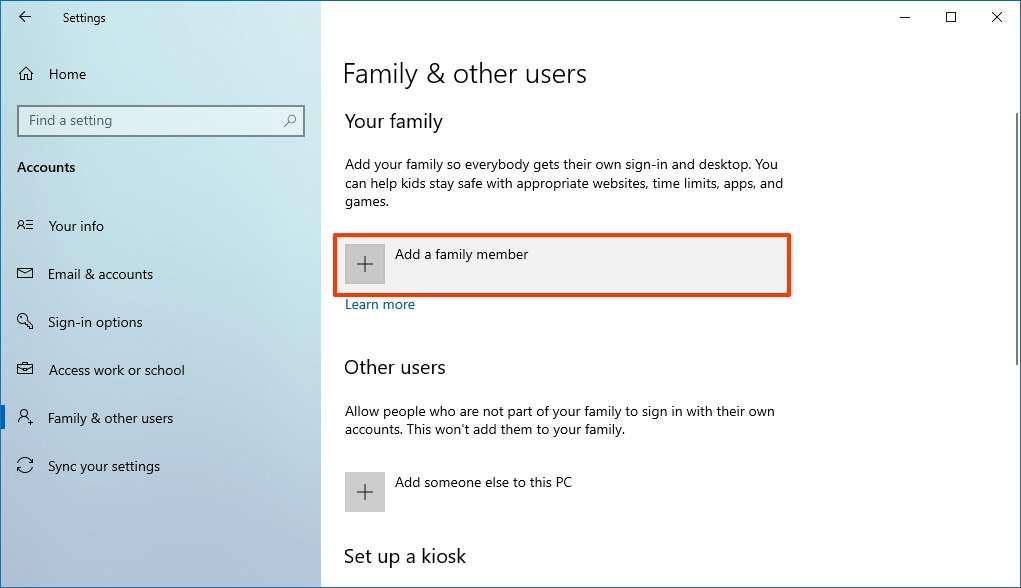




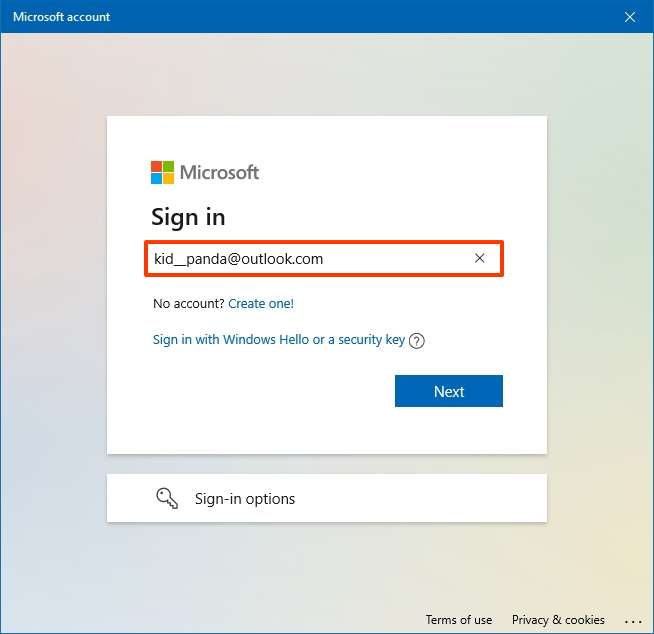
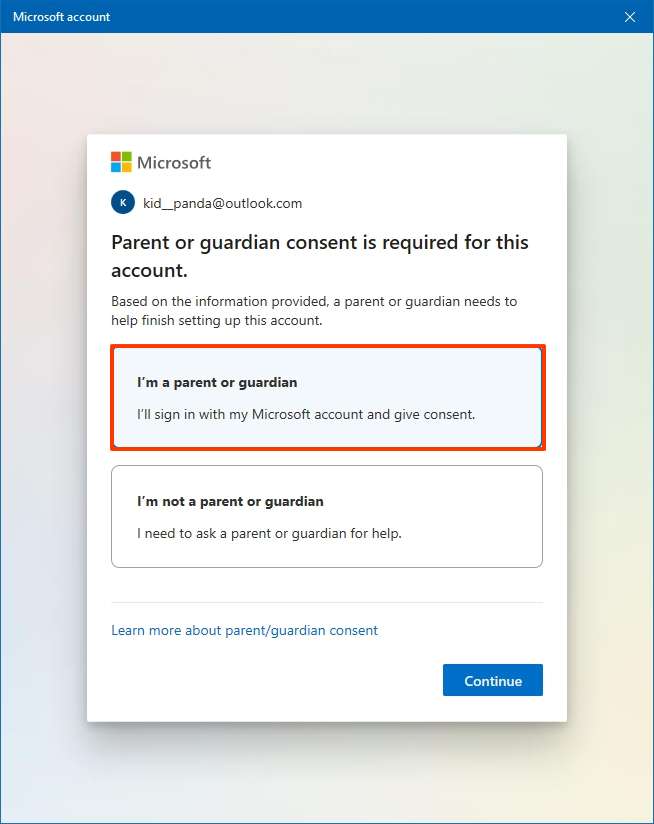
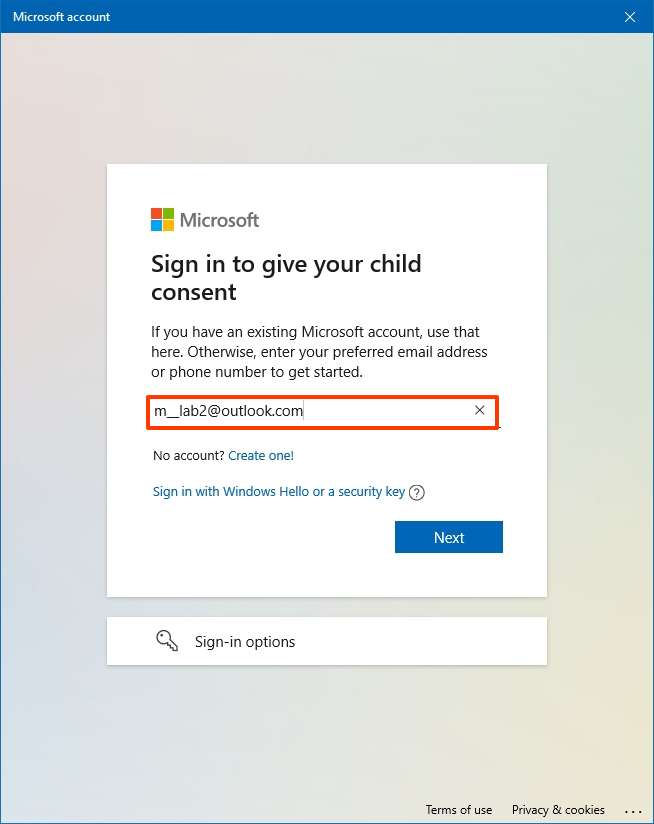
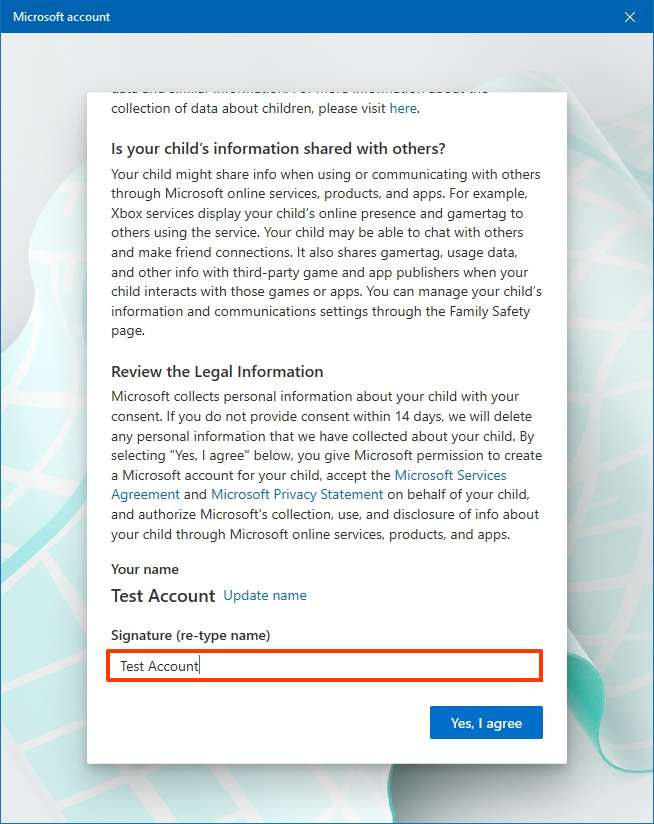
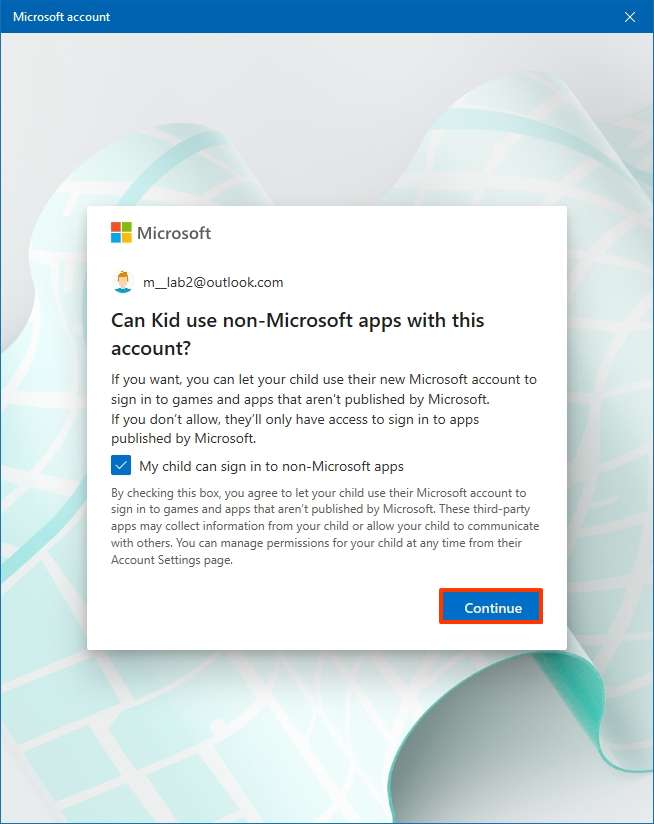




















No comments: